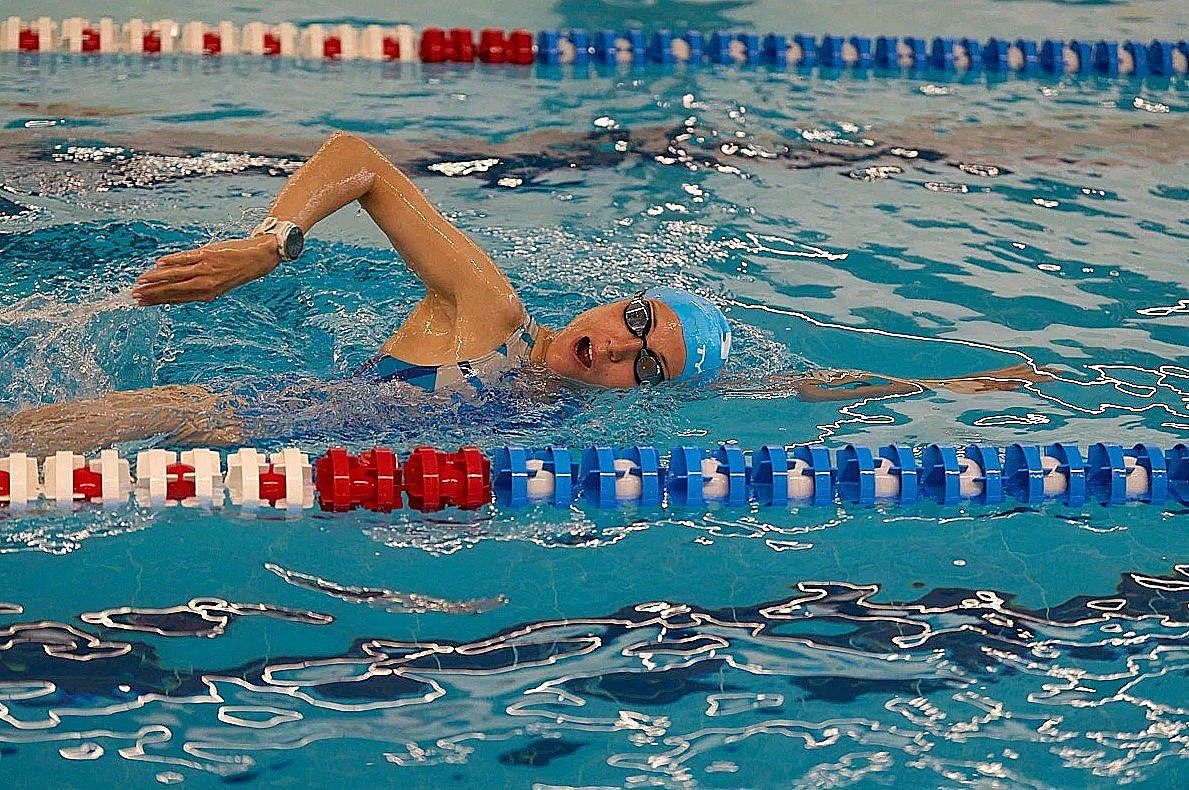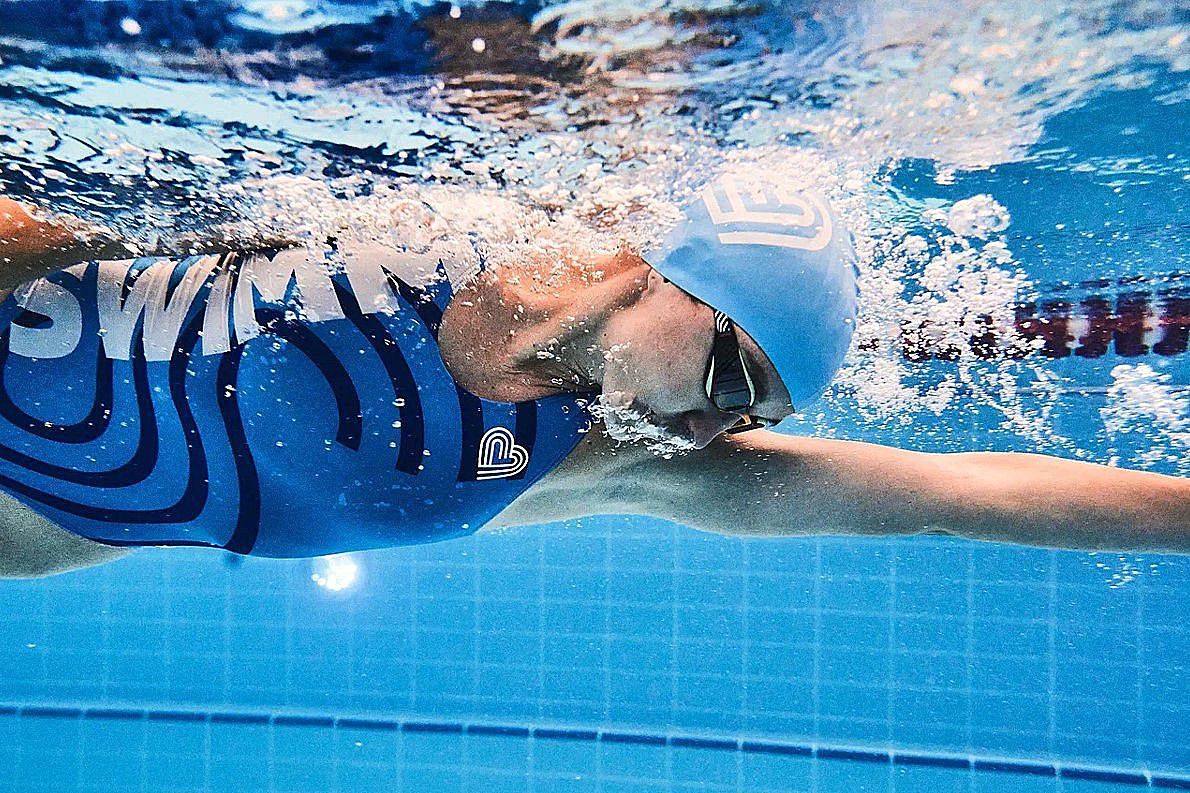How to Breathe Properly While Swimming
Swimming is not only about movement technique and coordination but also about the ability to breathe properly. Effective breathing in the water can significantly improve your performance and make your training sessions more comfortable. In this article, we will explore how to breathe properly while swimming and offer some tips for mastering the technique.
The first thing to understand is that swimming is an aerobic exercise, just like:
- walking
- cycling
- running
- cross-country skiing
You don’t hold your breath while running a kilometer, so why would you hold your breath when swimming 100 meters?
When you engage in aerobic exercises, your muscles require a constant supply of oxygen. When they are deprived of oxygen, the body produces lactic acid. Have you ever worked so hard that your muscles burned, and you had to stop and catch your breath? That’s a lack of oxygen leading to the accumulation of lactic acid.
Why Is Breathing So Important in Swimming?
Breathing is the primary source of energy for the body. In swimming, proper breathing helps:
- Reduce the accumulation of lactic acid and delay the feeling of fatigue: By maintaining a steady supply of oxygen, you can perform longer without feeling exhausted.
- Increase endurance: With less fatigue, you can swim for more extended periods.
- Maintain relaxation: Tense breathing can lead to overall tension in the body, while relaxed breathing helps sustain smooth movements.
- Increase speed: A proper breathing rhythm allows you to maintain optimal technique, which in turn helps improve your swimming speed.
These skills can be perfected under the guidance of experienced instructors. Learn more about our Level 1 Swimming School program and start your journey to excellence in the water
How to Breathe Properly While Swimming
Breathe through both your mouth and nose: When swimming, try to exhale through your mouth and nose underwater and inhale through your mouth when your head is above the surface. This helps you exhale quickly and take in more air, facilitating a smoother breathing cycle. For freestyle (front crawl), it’s recommended to inhale every 2-3 strokes. In breaststroke, you can inhale each time your head comes above the water.
Three Key Tips for Proper Breathing:
1. Turn Your Head Slightly to the Side.
Do not lift your head; simply turn it to the side. You should be looking toward the surface of the water, not lifting your head and looking upward. Keeping your head aligned with your body helps maintain the swimmer's balance.

2. Quickly Inhale, Then Exhale Fully Underwater.
When you take a breath, focus on a quick inhale. Do not hold your breath while swimming. Instead, exhale completely underwater. This will make it easier for you to take a quick breath afterward.
3. Keep One Arm Extended While You Inhale.
When you turn your head to inhale on one side, your arm on the opposite side should be extended forward. This helps keep your body in a streamlined position and supports your balance, making it easier to inhale. For example, if you are breathing to the right, your left arm should be extended in front of you.

How to Learn Proper Breathing
Practice on Land: Before entering the water, master breathing exercises on land. Take a deep breath in through your nose, hold your breath for a few seconds, then slowly exhale through your mouth. Exhale as if you are blowing through a straw. Try to exhale a steady stream for as long as possible. Repeat this 5-10 times.
Exercises in Water:
- Bubble Blowing: This is an imaginary exercise with a straw, but in the water. Take a breath, lower your mouth and nose into the water, and exhale a steady stream of air into the water. Lift your face out of the water as soon as you have exhaled all the air.
- Breathing with Face Down in the Water: Immerse your entire face in the water while standing at the edge of the pool. Take a breath, then submerge your face and look straight down at the bottom of the pool while exhaling a steady stream of air. Once you run out of air, turn your head slightly above the water to inhale.
With practice and perseverance, breathing while swimming can transition from awkward and frustrating to natural and smooth. Keep these tips in mind:
Master Slow Breathing: Start with short distances, take frequent breaks, and inhale after every 1-2 strokes. Gradually increase the number of strokes between breaths.
Relax Your Neck and Chest: Avoid lifting your head upwards to breathe, as this can slow you down in the water.
Practice Bilateral Breathing: Begin incorporating bilateral breathing early on to prevent muscle imbalances. This means alternating your breaths on both sides, typically every three strokes.
Stay Calm: Rapid breathing due to anxiety or haste can undermine your technique. Focus on maintaining a steady and relaxed breathing pattern.
Don’t Hold Your Breath: Proper exhalation is just as important as inhalation! Ensure you fully exhale to make room for your next breath.
Want to master proper breathing under professional supervision? Enroll in our Level 1 Swimming School program, where we will guide you step-by-step to improve your technique and help you feel confident in the water.
Conclusion
Proper breathing in swimming is a key element that can significantly affect your comfort and performance. Remember to practice regularly, be consistent, and remain patient. With the right approach, you can easily master this essential technique and enjoy swimming at a new level.